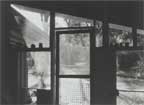Drinking water crisis: A California town fights back
More than a million Californians live in places where tap water isn't reliably safe to drink, and about a third of them are in small, mostly Latino towns such as Seville in the San Joaquin Valley. Many residents of those communities -- some of the state's poorest -- ignore the often contradictory water-quality notices and spend extra money for bottled water for cooking and drinking.

The crisis has spawned a new group of activists, women such as school bus driver Becky Quintana in Seville, who are pressuring politicians to clean up the water. "People -- even some in Seville -- ask me, 'Why don't you move?'" said Quintana, 54. "But ... my father and his generation sweated for our little house. This isn't about me. It's about our kids and grandkids."
A drive through the San Joaquin Valley, the southern stretch of the Central Valley from Bakersfield to Fresno, reveals the food-producing might of California: Fields of citrus, nuts and vegetables are among more than 200 different crops grown here. Agriculture in these parts is a $28-billion-a-year business.
The small towns where many of the field workers live are far from the highways and major cities. Much of the water contamination in those towns comes from harmful levels of nitrates, which enter the groundwater from fertilizers, feedlot runoff and leaky septic tanks. The colorless and odorless nitrates pose a particular health threat to infants because they can cause "blue baby syndrome," a blood-oxygen disorder that can be fatal. The long-term risk for adults is unclear. Farmers started using nitrogen fertilizer to boost crop production four decades ago, and since then nitrate contamination in the valley has increased fivefold. The California Water Resources Control Board is writing new guidelines for fertilizer use, but it will take years, perhaps decades, before groundwater pollution begins to ease, water experts say.
"I hear people in Hollywood talk about helping people in the Third World get clean water. Well, we need help in our own backyard first," Quintana said.
Susana De Anda, co-director of the Community Water Center, a Visalia organization that helps small towns make their case to the authorities, says California "has clear and consistent policies: Clean water flows toward money and power."
Two years ago, the town learned that it had a more serious problem: water contaminated by nitrates. Quintana led a contingent to the Tulare County Board of Supervisors last year.The county eventually agreed to run Seville's water system temporarily, while the community applied for state grants to fix it. But a year has passed with no action from the state, local water bills have increased from $20 to $60 a month — and nothing has been done to improve water quality.
Drinking fountains at Stone Corral Elementary School are shut down, and the 137 students use bottled-water dispensers set up in the classrooms -- at a monthly cost to the school of $220. "I could have bought a whole new language arts series for the cost of that water," said Christopher Kemper, the school's superintendent and principal.
A few weeks ago, Quintana helped launch a grass-roots effort in Seville and nearby communities to replace Supervisor Steve Worthley, who has told Seville residents that he believes their water is probably safe to drink and that any nitrates in the water are probably "naturally occurring."
After all precincts had reported on Tuesday, Worthley trailed his challenger by 21 votes."They've tried to sweep us under the table," Quintana said. "But we will not disappear."
Read more about the Central Valley movement for environmental justice and the drinking-water crisis spawned by agricultural runoff here.






























0 Comments:
Post a Comment
<< Home